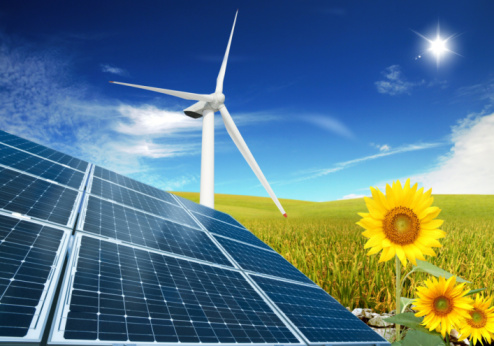
From early July to early December of 2014, a stock price chart including the United States Oil Fund (NYSEMKT: USO), First Solar Inc. (NASDAQ: FSLR) and SolarCity Corp. (NASDAQ: SCTY) could have gotten by with just a single (descending) line. Since early December, however, First Solar and SolarCity have wrestled back some of their share price losses, while it has only been in the past couple of weeks the USO has come back a little.
In the 2015 edition of its Sustainable Energy in America factbook, Bloomberg New Energy Finance denies any connection between oil prices and “most” alternative energy technologies:
There is no direct link between oil prices and most sustainable energy technologies in the US. Most of those [sustainable] technologies play a role in the power sector, whereas oil is mostly used for transportation and only rarely for power in the US. Nevertheless, there may be ‘second-order’ impacts from the oil price turmoil. The drop in cost of oil could serve as an indirect stimulus into the US economy, which could propel even more use of natural gas and renewable energy.
Rather than seeing low crude prices as bad for sustainable energy technologies, Bloomberg sees the savings from low oil prices stimulating the U.S. economy and driving demand for more non-transportation energy use. And that could drive investment in new clean energy projects.
ALSO READ: Likely Solar Winners Under New Obama Budget and China
Bloomberg reports that U.S. investment in clean energy rose from $48 billion in 2013 to $52 billion in 2014. Only China, which invested $89 billion in 2014 sunk more investment into clean energy last year. Globally, clean energy investment rose to $310 billion, the second highest total on record, behind only 2011’s $318 billion.
What gets the credit for the renewed investment in clean energy in the United States? According to Bloomberg:
The key drivers behind these numbers were: the brief window of renewed policy support for wind, the acceleration of the rooftop solar business; and the emerging phenomenon of ‘yieldcos’ (publicly listed companies that own operating renewable energy assets).
The major drivers of investment are no longer companies like First Solar or SolarCity, but companies involved in financing sustainable power generation. If we overlay three yieldcos on our earlier chart — NRG Yield Inc. (NYSE: NYLD), NextEra Energy Partners L.P. (NYSE: NEP) and Abengoa Yield PLC (NASDAQ: ABY) — we see that all three of these stocks performed better than either the solar stocks or USO. NextEra and NRG Yield have both posted share price gains since last July: NRG Yield is up a modest 1.2% and NextEra is up nearly 17.5%.
Last week we pointed out five top yieldco stock picks from UBS analysts. The analysts think that dividends from these companies could grow exponentially for years to come.
While oil producers and solar panel makers and installers might be having some difficulty showing a profit, the companies that now own the sustainable energy assets are collecting usage fees from consumers who have more money to spend on new appliances, TVs and all manner of electronic gadgets that use energy.
ALSO READ: The World’s Most Innovative Companies
Credit card companies are handing out rewards and benefits to win the best customers. A good cash back card can be worth thousands of dollars a year in free money, not to mention other perks like travel, insurance, and access to fancy lounges. See our top picks for the best credit cards today. You won’t want to miss some of these offers.
Flywheel Publishing has partnered with CardRatings for our coverage of credit card products. Flywheel Publishing and CardRatings may receive a commission from card issuers.
Thank you for reading! Have some feedback for us?
Contact the 24/7 Wall St. editorial team.



